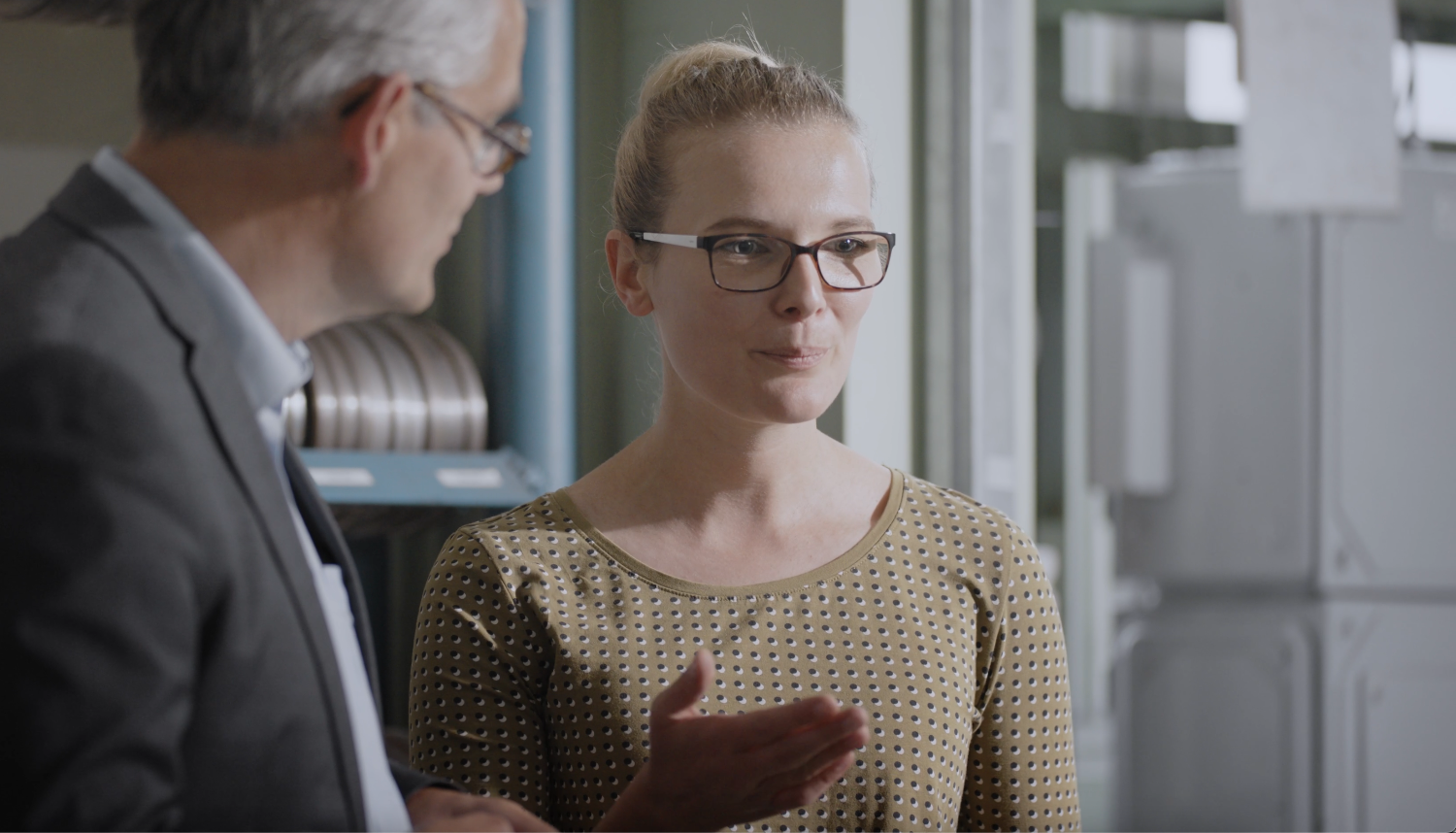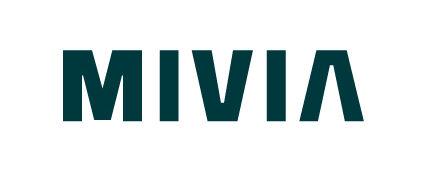AI training 101: How we train our models at MiViA
Artificial intelligence (AI) has triggered a revolution. From automating simple tasks to solving complex problems, AI models have the potential to change almost every aspect of our lives. But how are such models created? And more specifically, how are MiViA's AI models created? In this blog post, we explain the basics and key steps required to develop our models.

Navigation
What even is AI-Training?
AI training is the process of feeding a computer model (often a neural network) with data to learn specific tasks. This can include recognising patterns, making decisions or predicting future events. The aim is to train the model so that it can independently solve tasks for which it was not originally programmed.
Training AI in the context of microstructure analysis refers to the process of training an AI model, typically a machine learning model or neural network, to recognise and analyse specific patterns, properties or anomalies in the microstructures of materials.
By training the networks on extensive data sets, they can learn to recognise complex patterns and features that are not obvious to the human eye. In parallel, machine learning models based on statistical and probabilistic methods are being developed to create predictive models that can be used in a variety of applications.
At MiViA, ML models are specifically trained and combined for each analysis module and suitable post-processing is developed.
Step 1: Defining the problem
When developing AI models for microstructure analysis, the precise definition of the problem to be solved is a crucial step. This includes the precise determination of the type of microstructures to be analysed and the specific tasks that the AI model must perform.
A well-defined problem makes it possible to develop a targeted and effective AI model that provides specific, valuable insights into microstructure analysis.
For example, MiViA has already successfully trained AI models to automatically identify and classify certain structural features in metals.
Our approach is to develop specific analysis modules for individual analysis methods and make them available as a platform. In other words, the relevant input and output data are first defined for each method, taking into account the requirements of existing standards and scientific procedures.
Step 2: Data collection and preparation
Data is at the heart of every AI. An extensive data set is required that is relevant to the problem. This data needs to be collected, cleansed and put into a format that can be processed by the AI model. This can include removing duplicates, filling in missing values or converting data into numerical formats.
With regard to microstructure analysis, extensive amounts of data must first be collected to represent the microstructures of the materials to be analysed.
This data can come from high-resolution images captured using techniques such as optical microscopy, scanning electron microscopy (SEM) or transmission electron microscopy (TEM). The data then needs to be prepared for training, which may involve normalising image sizes, converting to a suitable format and possibly annotating certain features or defects.
Most of the existing models on the market in the field of metallographic microsection analysis are very limited in their reliability due to the sparse training data sets.
Only MiViA currently has a sufficiently large amount of data on microstructure images described in scientific detail to enable the development of general analysis tools, and this is constantly being expanded.
Step 3: Selecting the model
There are different types of AI models, including neural networks, decision trees and support vector machines. The choice of the right model depends on the type of problem to be solved.
Depending on the specific task - be it the identification of certain microstructure types, the detection of defects or the prediction of material properties - a suitable AI model is selected.
Deep Convolutional Neural Networks (DCNNs) are a specialised form of deep learning architectures that are particularly effective at processing visual information, making them ideal for applications in image analysis.
MiViA therefore focuses on the development and training of neural networks, in particular DCNNs, as well as the implementation of machine learning models. These technologies make it possible to efficiently analyse large volumes of data and derive precise predictions from them.
Step 4: Training the model
In this phase, the AI model is trained with the prepared data in order to learn patterns and relationships. This process often requires significant computing power, especially for large data sets or complex models. During the training process, the model adjusts its internal parameters to improve the accuracy of predictions or decisions.
The selected model is trained with an extensive collection of microstructure images, which have been carefully prepared beforehand to help the model recognise relevant patterns and features.
Während des Trainings lernt das Modell, feine Details und spezifische Charakteristika der Mikrostrukturen zu identifizieren und zu klassifizieren.
In MiViA, this learning process takes place by adjusting the weights within the neural network based on the feedback that the model receives for its predictions. A crucial aspect of this is to avoid overfitting, where the model becomes too specific to the training data and loses its ability to generalise to new, unknown data. To achieve this, techniques such as splitting the data into training and validation sets, applying regularisation methods and, if necessary, performing data augmentation are used.
The aim is to develop models that can not only analyse microstructures precisely and efficiently, but are also robust and reliable when applied to new, diverse data sets.
Step 5: Evaluation and micro adjustments
After training, the model is evaluated to assess its accuracy and effectiveness in analysing microstructures. This is usually done by testing with a separate data set that was not used for training. Based on the results of these tests, the model is further adapted and optimised to improve accuracy.
With MiViA, too, analysing errors or incorrect predictions helps to understand the areas in which the model needs to be improved.
One of the most important steps in fine-tuning is to adjust the hyperparameters of the model, such as the learning rate, the number of layers in a neural network or the number of trees in a decision tree ensemble.
After fine-tuning, the model is evaluated again to ensure that the changes made have led to an improvement in performance. This cycle of evaluation and fine-tuning can be repeated several times until the model performs satisfactorily.
Step 6: Testing and quality assurance
In this phase, the product is made available to a group of real users outside the development team to test it in a real environment. The aim of testing is to gather feedback, identify undetected errors and evaluate the usability of the product before it is officially launched on the market.
Testing helps to prepare the product for the official launch by ensuring that it meets the needs and expectations of end users.
One of the main aims of testing is to identify errors and problems that were not recognised during the earlier test phases. This includes technical errors, usability problems and performance issues.
Based on the feedback and data collected, the developers make adjustments to the product. This can include fixing bugs, improving the user interface or adding new functions.
Step 7: Implementation and continuous learning
As soon as the model functions satisfactorily, it can be used in real-life applications, such as quality control in the manufacturing industry or in materials research.
It is then important to continuously train the model with new data in order to maintain its accuracy and relevance.
Conclusion
The development of AI models is an exciting and dynamic process that has the potential to improve many aspects of our lives.
By understanding the basics and following the steps described above, powerful and effective AI models can be developed that solve real problems.
AI training in microstructure analysis offers several advantages, including the ability to analyse large amounts of image data quickly and consistently, the detection of subtle patterns that are difficult for the human eye to identify, and the ability to continuously learn from new data and improve analysis accuracy over time.
